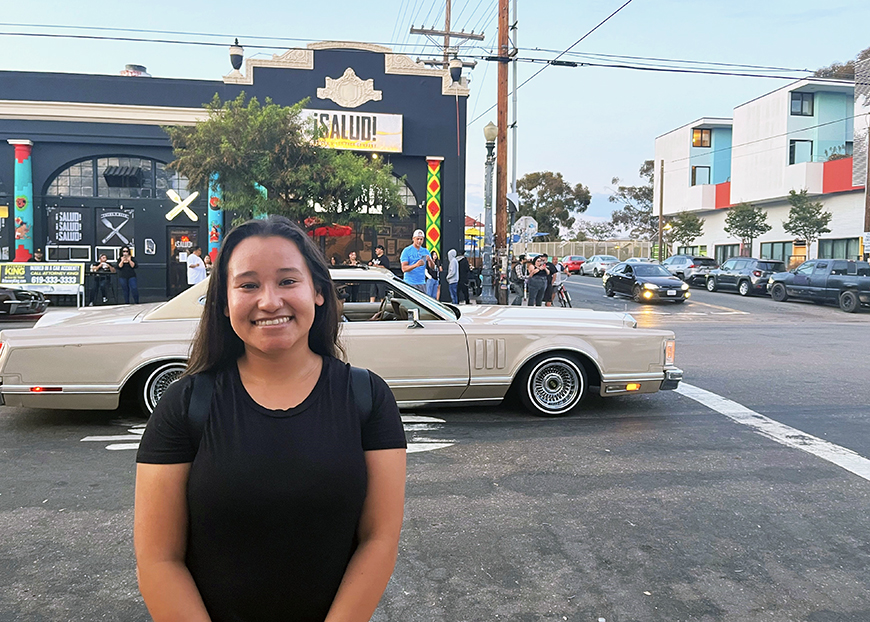Anthropology Major Researches Contemporary Lowrider Community

Hispanic Heritage Month is celebrated nationally from September 15 to October 15 and recognizes the contributions and influence of Hispanic Americans to history, culture and advancement.
Over the course of the month, USD News Center will highlight unique stories, thoughtful interviews and local events — both on campus and around San Diego — that encapsulate the spirit of this wonderful annual celebration.
Amaya Ardilla grew up with a deep, personal connection to the lowrider community in San Diego’s South Bay.
“A lowrider is a type of car that has had certain modifications to it,” says Ardilla, a fourth-year Anthropology major who had several family members and close friends active in the subculture when she was a child.
Ardilla recently completed her Summer Undergraduate Research Experience (SURE) on the contemporary lowrider community in San Diego. SURE is an educational summer research program that supports USD undergraduates to engage in research, scholarly activities and creative works for up to 10 weeks during the summer.
“There is some historical research on lowrider communities; however, there isn’t much today and even less on San Diego — usually it talks about Los Angeles and other places north of us,” says Ardilla. “My goal is to look at their norms and values of the community and to hopefully destigmatize the community because they have a lot of negative stereotypes associated with them, which more often than not aren’t true or are based on something from 30, 40 years ago that is no longer relevant.”
Lowriders are typically cars made between the 1930s and 1980s, and are commonly Chevrolets and Impalas, she says. Sometimes, they have the roof chopped off and are fitted with the roof of a different model. Sometimes, they feature hydraulic systems that make them bounce. Often, they are painted bright colors with pinstripes and special artwork — sometimes even portraits of family members.
Ardilla grew up in the Paradise Hills neighborhood of San Diego and frequented car shows and other lowrider community events. Talking to her classmates and hearing their misconceptions about lowriders, Ardilla decided she wanted to pursue her own research.
“Learning that so many people had that disconnect, I wanted to learn more,” she says. “In coming up with a topic, I wanted to do one that I had access to.”
Ardilla had previously taken an Ethnographic Field Methods class with Visiting Assistant Professor Meghan Donnelly, PhD, where she learned how to do fieldwork, participant observations and interviews. Donnelly was Ardilla’s mentor professor for her summer research.
Ardilla attended multiple lowrider events throughout the summer months and collected observations and interviews. One thing she learned was how broad the lowrider community has become in recent years.
What was once a heavily Chicano subculture has grown and expanded, she says.
“No one in the community is the same,” she says. “I’ve interviewed people who were in the military, people who are retired and people who have grown up in the culture like me. Today, it’s [also] grown in importance in places like Japan and Australia.”
Along with the aesthetics of car modifications, the events often take on added meaning and can serve as fundraisers and other community-driven opportunities.
Ardilla will present her research at USD’s Fall Undergraduate Research Colloquium and also plans to continue working on it in the future.
“I try to see the importance of each car, because for a lot of people [here], their car is like a family member rather than just something they drive around.”
— Matthew Piechalak


